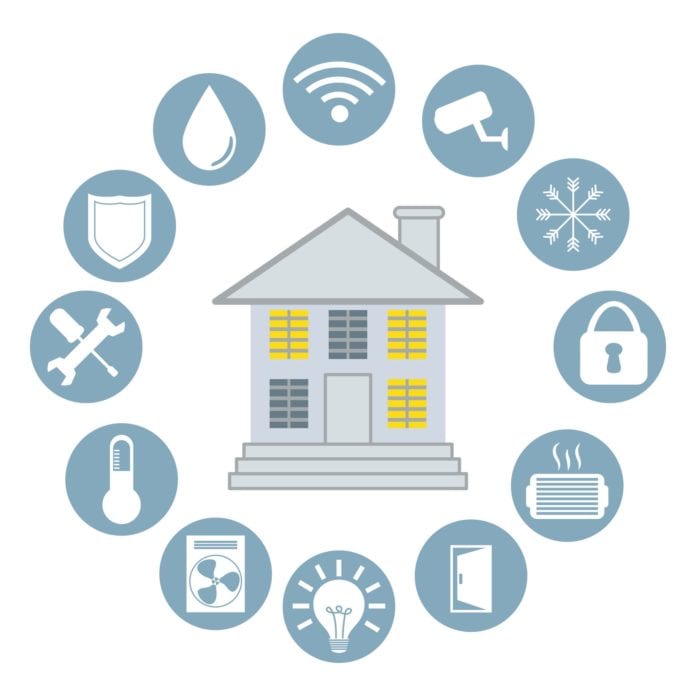The smart building: A laundry list of potential benefits
Smart buildings are expected to save money in more ways than one might think. Yes, they can significantly reduce energy and operating costs, but there are a number of expected not-so-obvious benefits gained from implementing a smart building system. These could give a boost to a building owner’s return on investment while providing occupants with an intelligent work environment.
Some potential advantages of owning or working in a smart building include:
- Tenant retention
- The better your building is at keeping its tenants comfortable, the more likely they will want to be there. Smart buildings could offer unique perks to employees and in turn help reduce turnover.
- High-speed connection
- Your building isn’t connected unless the people inside are. Smart buildings can be outfitted with high-speed internet and voice over internet protocol services. Since businesses increasingly rely on the internet, an increase in speed could mean an increase in production and revenue.
- Self-monitoring
- Smart buildings are designed to constantly gather data and monitor themselves for problems in the structure’s facilities. So, for example, if an elevator breaks down, the building could find the problem, self-diagnose and communicate with the appropriate organization to get it fixed. Smart buildings can also monitor system performance to increase energy savings. Overseeing these processes could decrease complaints about inefficient or failed facilities, reducing time spent addressing potential problems.
- Comfort factor
- Smart buildings are set to adapt to the way people live. They have control of heating, ventilation, air conditioning and lighting, learning the schedules of those who operate these systems in order to optimize comfort.
- Increased safety and security
- It is becoming increasingly important for people to feel safe at the workplace, and smart buildings can help in those efforts. Take, for example, a situation in which a fire alarm goes off. A smart building can detect smoke, tell occupants to evacuate the building, contact the correct authorities and prepare the structure for minimizing the spread of risk. Security also is an important issue, and the deployment of cameras and the ability to stream footage from a surveillance camera to a laptop can increase safety and provide peace of mind to tenants.
- Big data, big reward
- Data can help enterprises make sound decisions, and owning a smart building means being updated with the latest data on operational costs. This data is sent to a network operation center where appropriate changes can be made.
- Brains turn a building into a green building
- With decreased energy usage comes a favorable impact on the environment. Intelligent efficiency measures if applied to 35% of the eligible commercial floor area in buildings with 50,000 or more square feet could save upwards of 50 terawatt hours by 2030, assuming a conservative savings estimate of 20% – more than 1% of U.S. projected energy use by that year. Combined with 17 other common-sense efficiency measures, the U.S. could save 22% of its total projected electricity use in 2030, according to Buildings. The ability to adjust power consumption to be used only when needed as well as the potential for the installation of reusable energy decreases the need to burn fossil fuels.
Energy saving: Increased return on investment and environmental friendliness
The best pitch to any building owner on why they should implement a smart system starts with energy savings. Smart buildings can use less energy compared to those without automated processes. These adapting systems can learn to know when demand for lighting or HVAC and automatically decrease use when demand is low. They can use accurate, intelligent monitoring and its control of energy intensive facilities to reduce operating costs. It can also regulate the flow of incoming air from outside to regulate temperature. This can results in energy savings of between 10% and 30% according to Energy Works.
Commercial buildings could save up to $60 billion between 2014 and 2030, with a “comprehensive building labeling and benchmarking program.” Benefits gained from adjusting corporate tax legislation to encourage the replacement of inefficient equipment and from removing regulatory barriers to combined heat and power projects alone could reduce national energy consumption and save the economy close to $300 billion, according to a study by the American Council for an Energy Efficient Economy.

In living spaces, like apartments, tenants can implement sub-metering, billing individual tenants for their specific utility use based on readings from meters. These readings are logged and sent via an internet connection to a computer or tablet. This provides building owners greater detail in how energy is being consumed.
Savings up, costs of entry down
Building management systems are installed in older buildings or built-in to new constructions to make them smart. BMS usually requires high capital expenditure and operating expense. In fact, the average cost of using a BMS to turn a building smart is around $2.30 per square foot, or $250,000 per 100,000 square feet, according to Intel.
New technology brought on by the “internet of things,” with its expected low-powered networks and inexpensive sensors, is helping to keep smart building costs down. According to Buildings, adding IoT-based controls and monitoring to a building can cost from between $5,000 to $50,000, significantly less than traditional BMS costs.

